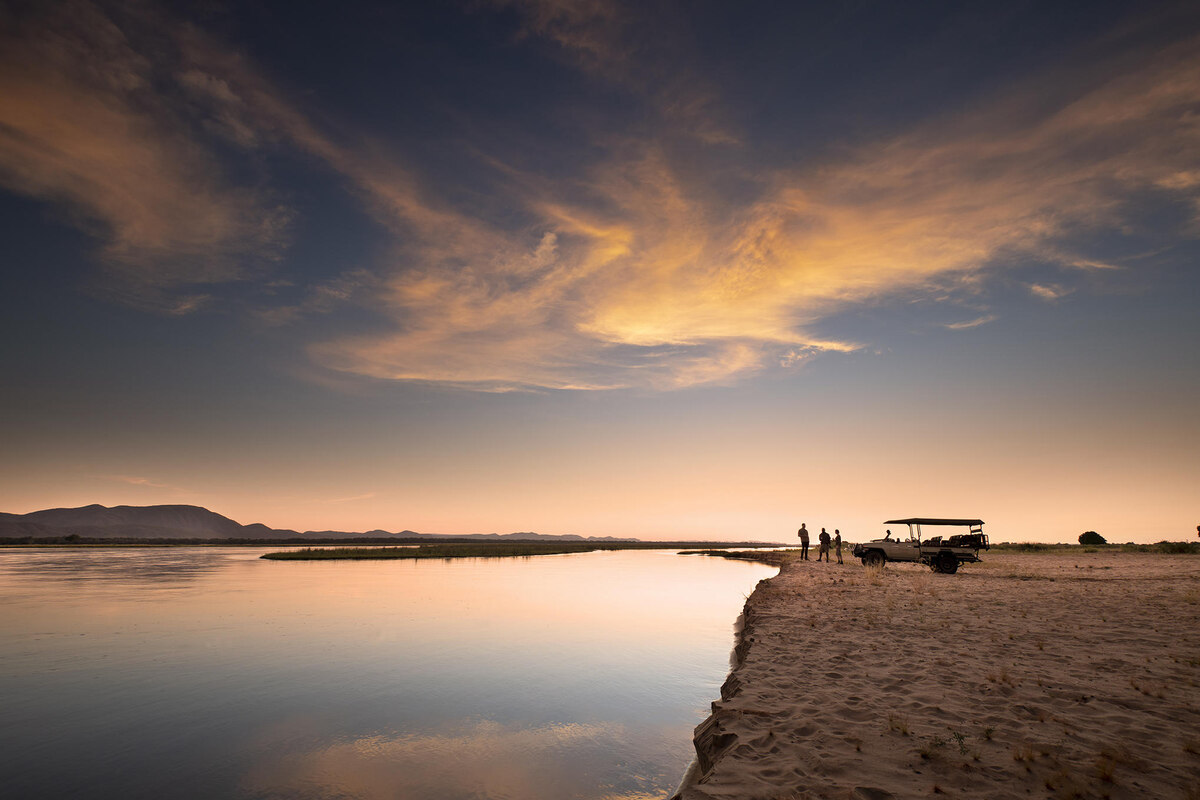
Sunset on a Discover Africa Safari
We can only ever travel along a thin line; when we travel, how we go is therefore as important as where we go. The right mode of transport can enhance the journey, multiply the impact, increase its psychic edge. Transport provides a sense of structure and time, a rhythm that torques our senses in a particular direction. There’s no best way, only the best to be gotten from each.
On a Discover Africa safari journey to South Africa and Zimbabwe, my partner and I were traveling in a variety of ways—planes and cars, of course, but also by train, boat and foot. The pleasures those modes knocked loose were matchless and singular, moments in time that filled our senses.
See and Taste
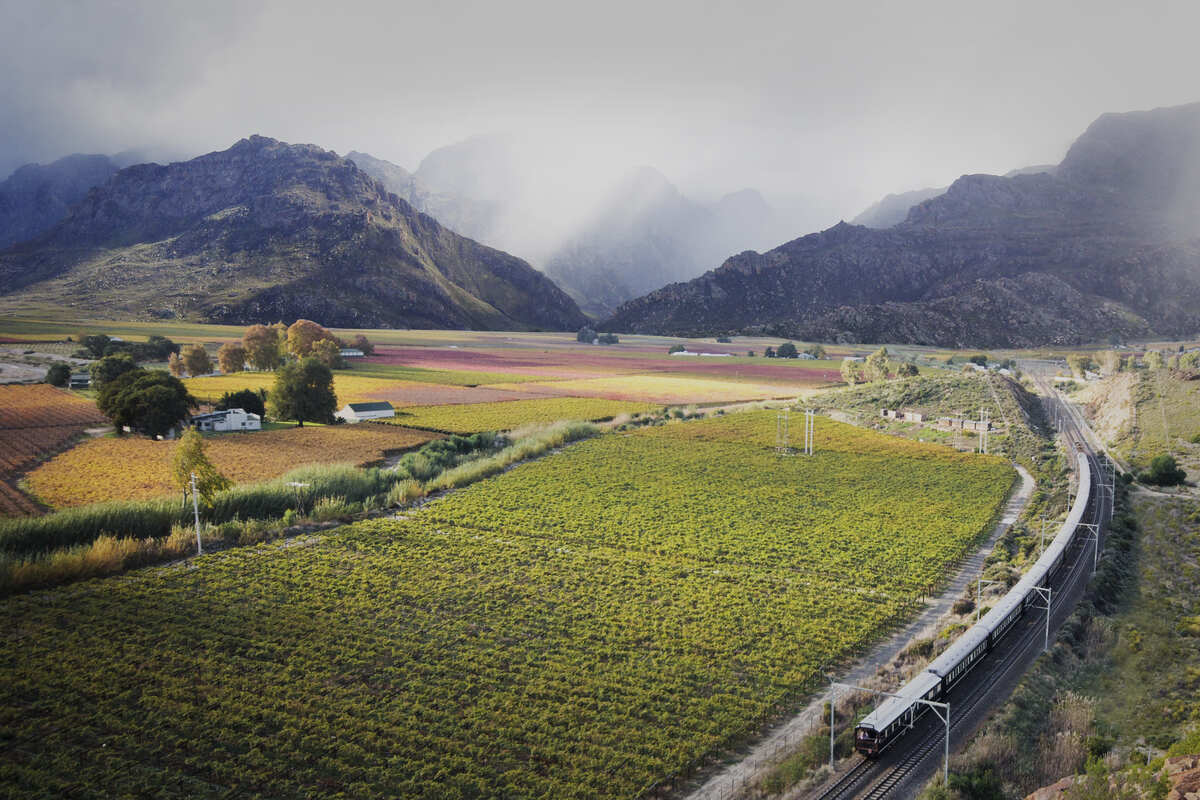
The best train trips are grounded by anticipation: the slow, deliberate arrangement of carriages, the anvil clang of the couplers, the primed heat of the steel rails. What made the anticipation of Rovos Rail starkly different from any train I’d taken before—different, even, from any train in the world—was the golden light emanating from the carriages, the tuxedoed staff lining the gangway, and the wood-paneled interior of my suite.
“When you get in there, look at the joints on the cabinets,” Rovos Rail founder Rohan Vos told me. “That’s how you can tell if a guy knows what he’s doing.”
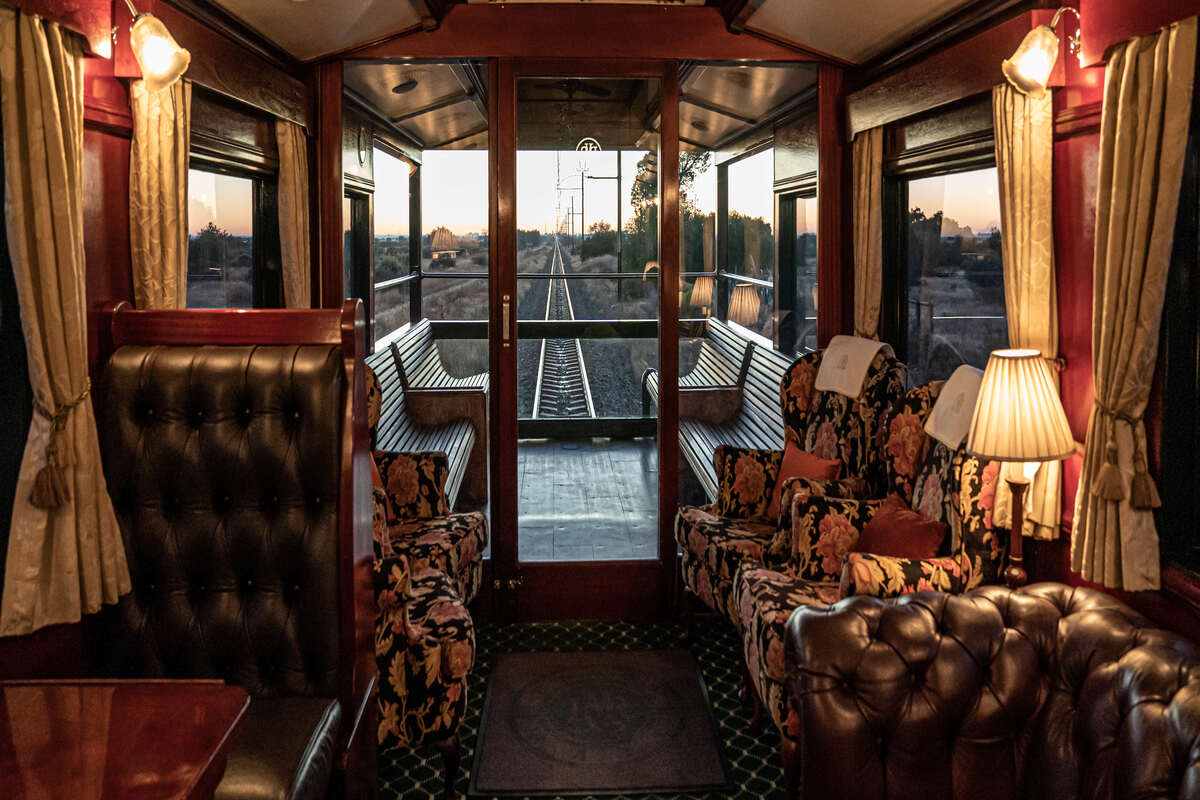
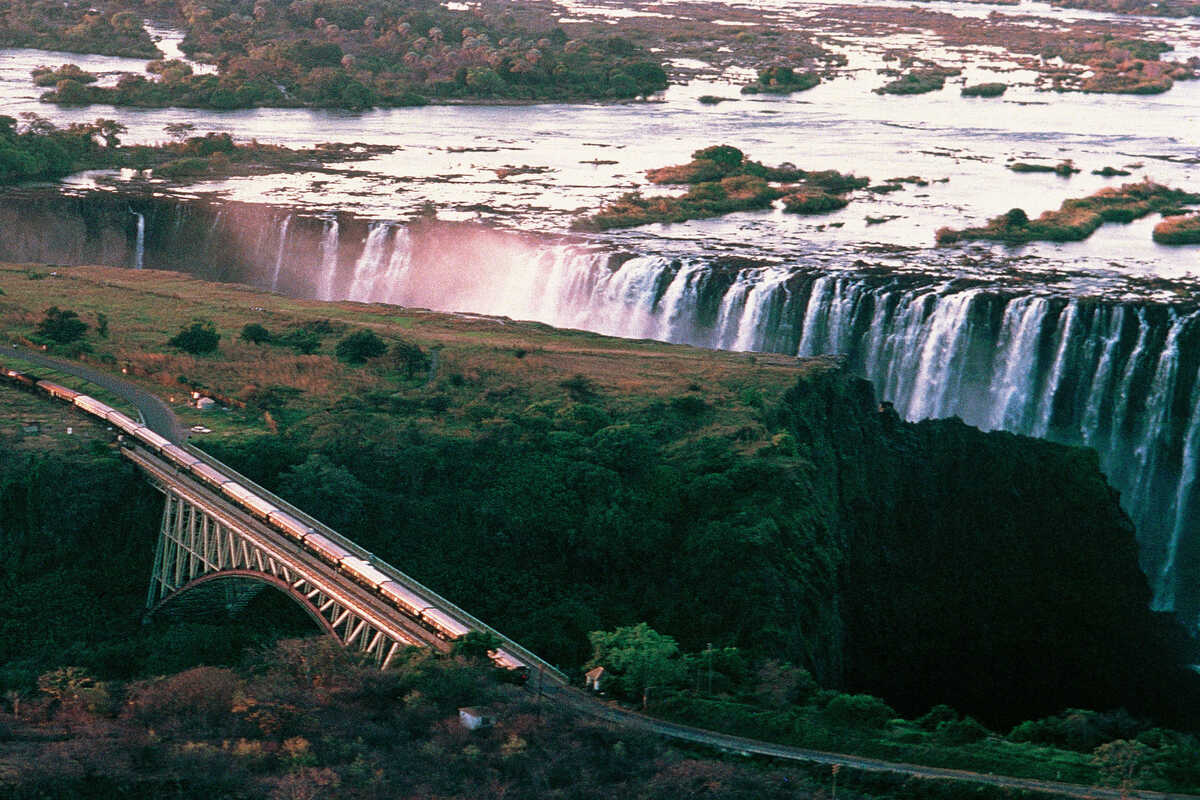
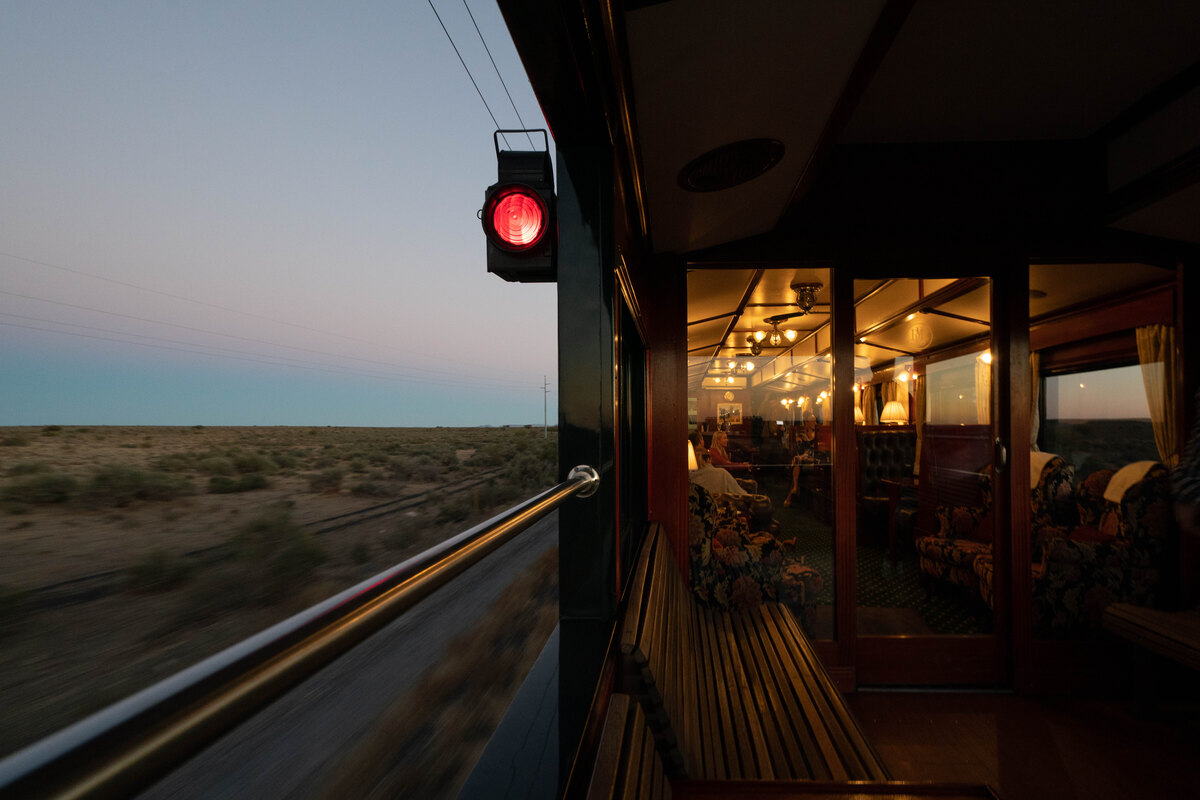
Vos had come out to see off our four-night journey from Pretoria to Victoria Falls. The mileage wasn’t much—an average passenger train could cover the 1,000 miles in around 24 hours. However, for a variety of reasons, the narrow Cape gauge of Southern Africa is not well maintained (“The rails are 7/10 in South Africa and about 4/10 in Zimbabwe,” Vos said.) Rovos takes it accordingly slow.
The tempered speed, never above that of a charging rhino, was not a bother, and only added to the antiquated feeling of the journey. This is the luxury of a train—the opportunity to move while being moved, to have familiarity while passing through the exotic.
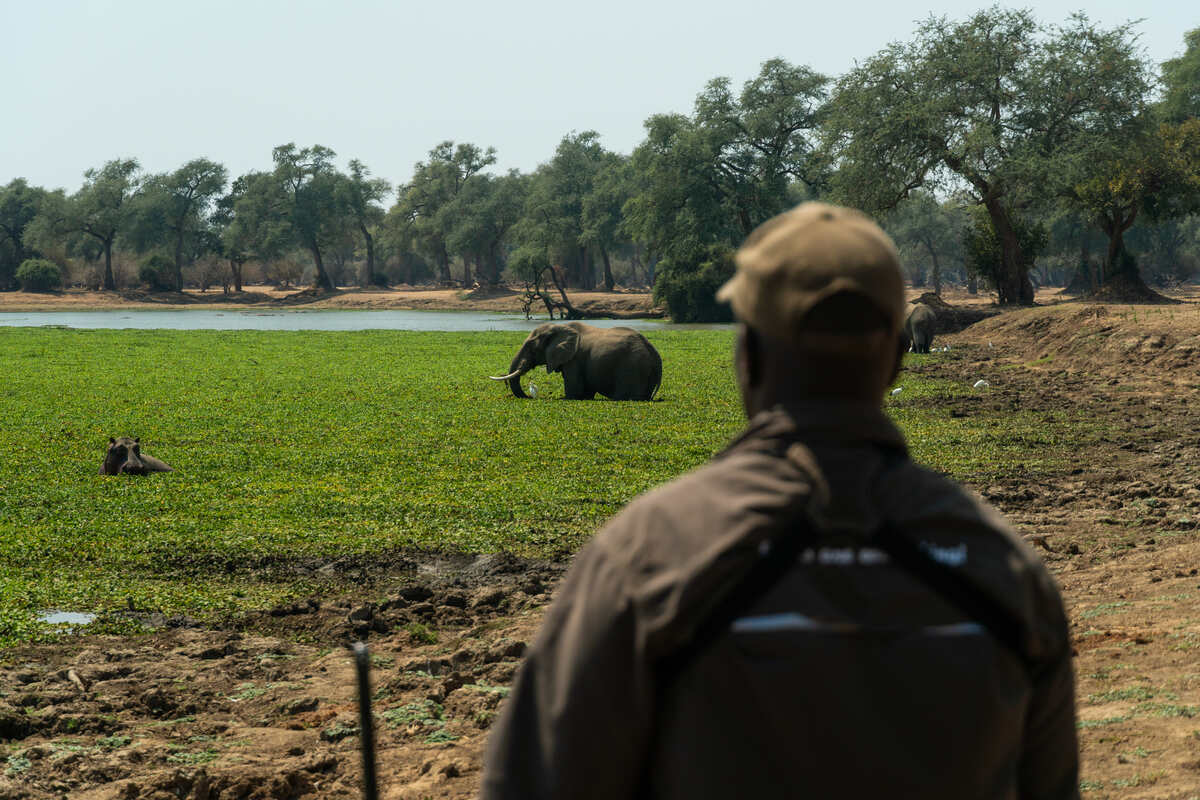
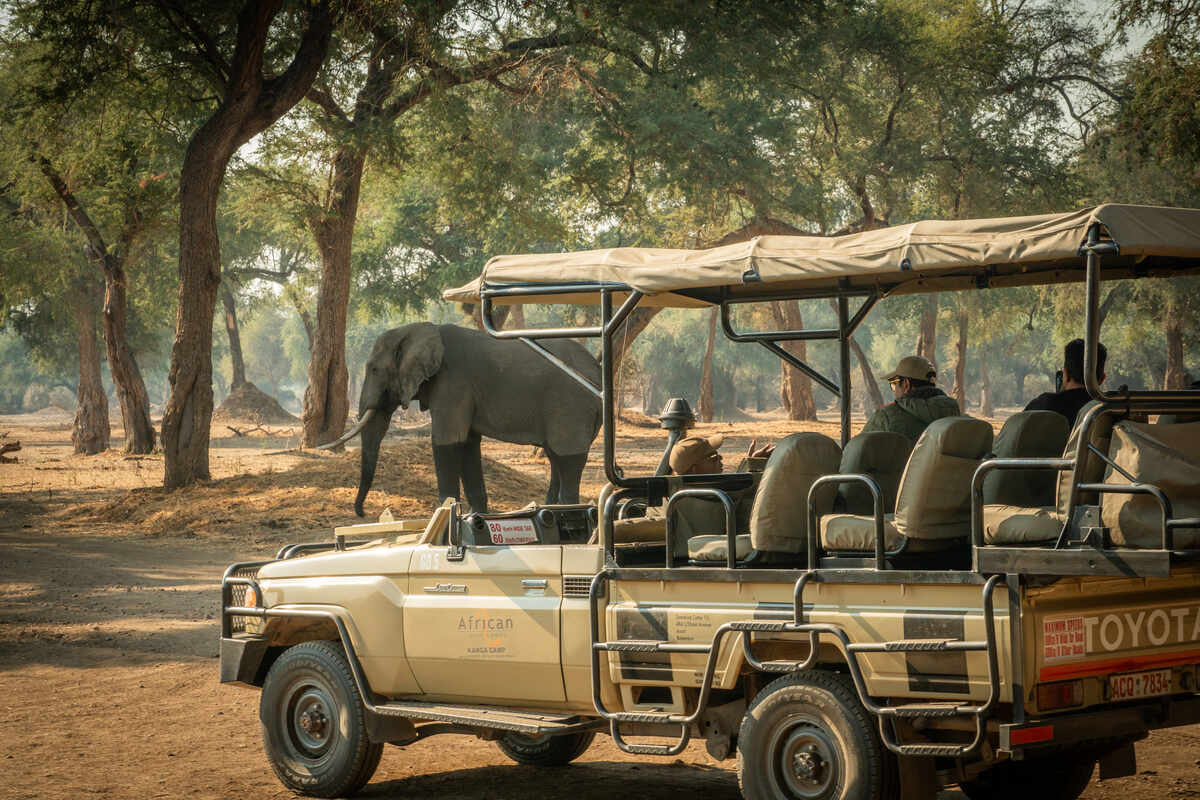
Rolling through the dry Matabeleland of western Zimbabwe, I could look up from my book to see the yellow savanna flashing by, swathes of elephant grass, or Jacaranda trees in full mauve blossom. I could have a gin and tonic, eat a lion’s share of biltong, or bathe in my ensuite. Or I could do all at once.
On Rovos, there is no distraction beyond what is right in front of you—not only is there no internet signal in that remote country, but no phones or computers are allowed in public. Of the strict policy, Vos, with a heavy dose of wry humor, said “We’re about good conversation and serious drinking, and we don’t want any of that technology disturbing those hobbies.”
He might have added eating. Springbok loin and rack of lamb, Kilimanjaro cheese and karoo crumble, champagne sorbet and Amarula parfait were all on offer, accompanied by a curated wine list.
“This is my home,” said Bradley Tshepang as he poured me another glass of Meerlust red. I knew what he meant: after three days, I, too, felt at home. Everything was as I would have it: the breakfast eggs just as I liked them, the habitual sundowner gin and tonic in the rear observation car, my clothes packed away into the cabinet, each joint of which is square and true.
Touch and Balance
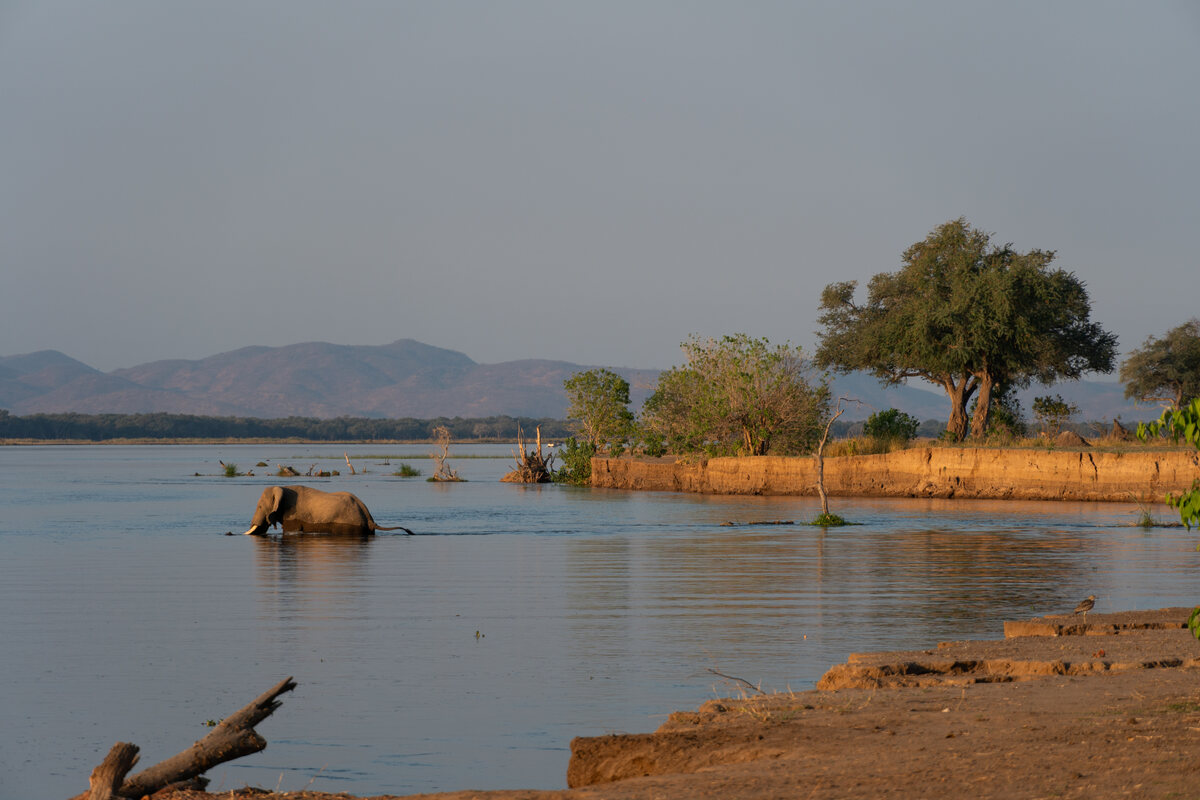
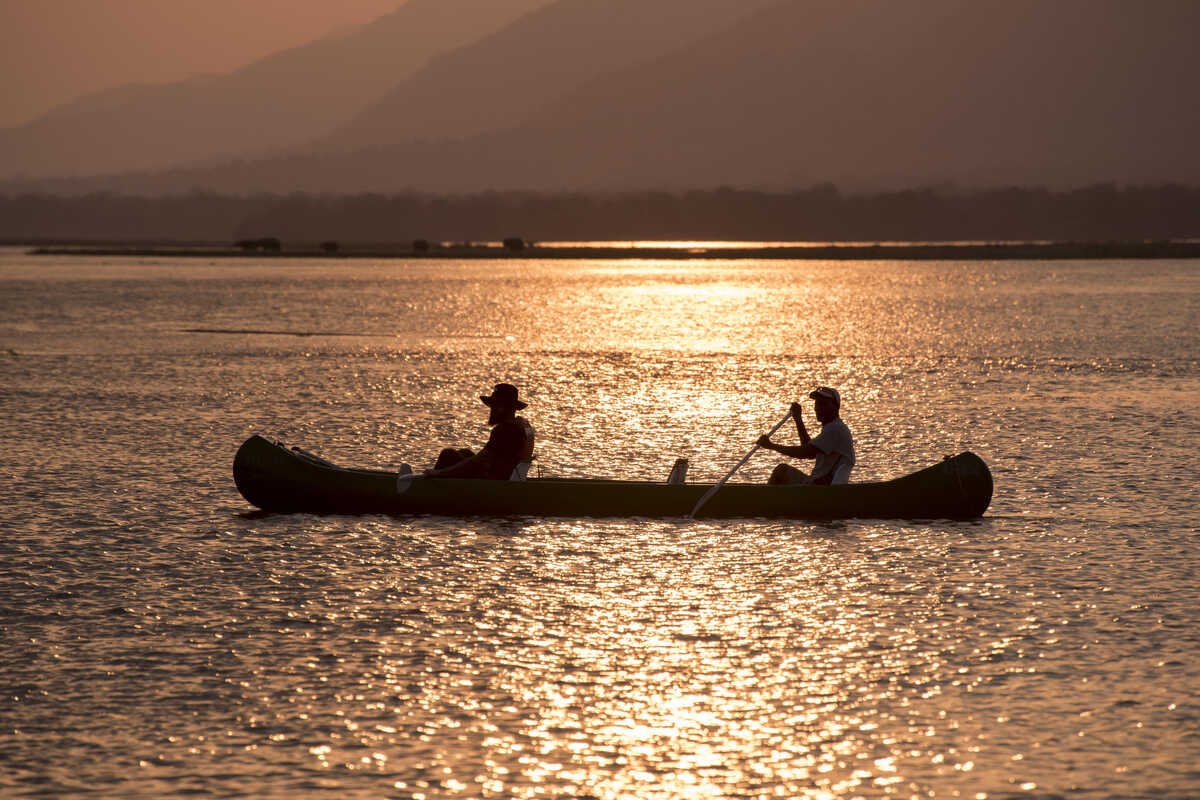
The Zambezi River is Africa’s fourth longest river, and its deadliest. I could not wait to get onto it. My partner and I were staying at African Bush Camps’ Nyamatusi Mahogany camp, near Mana Pools National Park. The camp is a series of canvas and wood lodges on the wide Zambezi floodplain, and each morning, when the sun rose over the mountains in Zambia, we watched, from our tent, the eland and impala make their way through across the broad lowland to slake their thirst at the river’s edge. Occasionally, some creature was too thirsty to make the journey—elephants regularly stuck their trunk into the plunge pool that was a part of our tent’s wooden decking, to suck up their drink.
Late one afternoon, we assembled along the riverside. We were a platoon of two canoes, a passenger and a guide in each. A light crew for a paddle that would take us a few miles downstream. Our lead guide, Kamble Yona, had been leading guided trips along the river for 23 years. He had plenty of white-knuckle stories about his time on the river—looking directly into the gaping maw of an angry hippo, for one—and the fine touch required to safely thread through a river teeming with animals potentially deadly in their indifference.
Yona handed me a lifejacket and a paddle, then stuck a revolver in his belt. Was it that dangerous? I could see a few slim crocodile heads—doppelgangers for driftwood, if they hadn’t been moving against the current.
“Crocs are easy to deal with,” Yona said. “Just don’t put your hand in. Hippos are different. They’re very territorial.” And what do we do for them? “Use nice, easy strokes. And don’t lose your balance.”
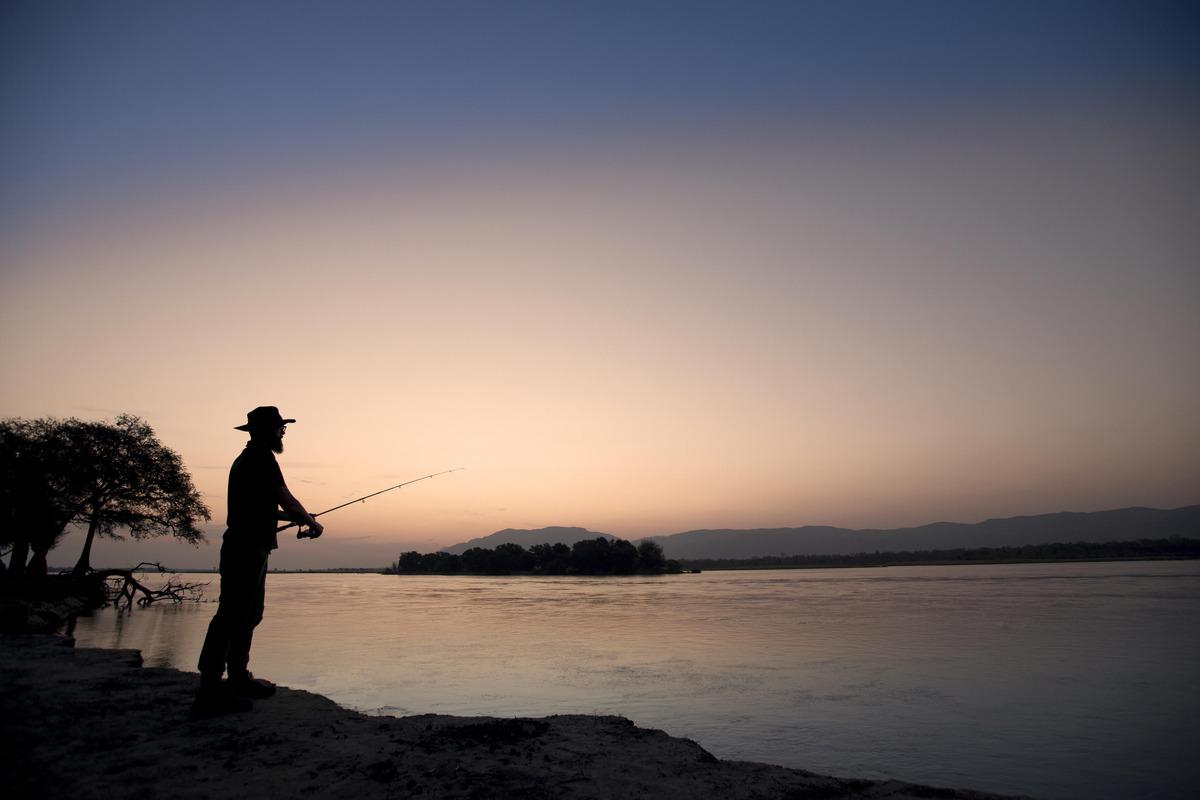
He didn’t seem worried, though the large creatures are the most dangerous animals in Africa. The problem lies in underestimation, of thinking the creatures’ size makes them slow or lazy. They are anything but, and if they feel in danger, will make for deep water. We stitched along the river, finding the deep channels—not always easy in the sandbank-rich Zambezi.
Suddenly the river seemed full of purple mounds of hippo backs. At our approach, they would crash into the water. They could reappear again anywhere, and anytime—a hippo can hold its breath for seven minutes. Inevitably, they would rise, their ears rotating like purple satellites, their head as wide and thick as the front end of a Buick.
The sun was making its downward fall, and I could feel the cool air rising from the water. The water was smooth and whirly, with clumps of water hyacinth floating past along with the occasional crocodile, happy to let us get as close as we dared.Slipping along the reed-covered bank, we broached a clearing where we took a bull elephant by surprise. His ears flew out, his trunk rose up, and a great trumpet sounded out. It was all bluster; he sank back into the grass.
Soon after, we put into a small, muddy embankment. The bar car had beat us there, and as the sun set behind the smoky mountains of the Zambezi Escarpment, we lifted our whisky sodas to our successful flotilla, an act of balance and nerve.
Hear and Smell
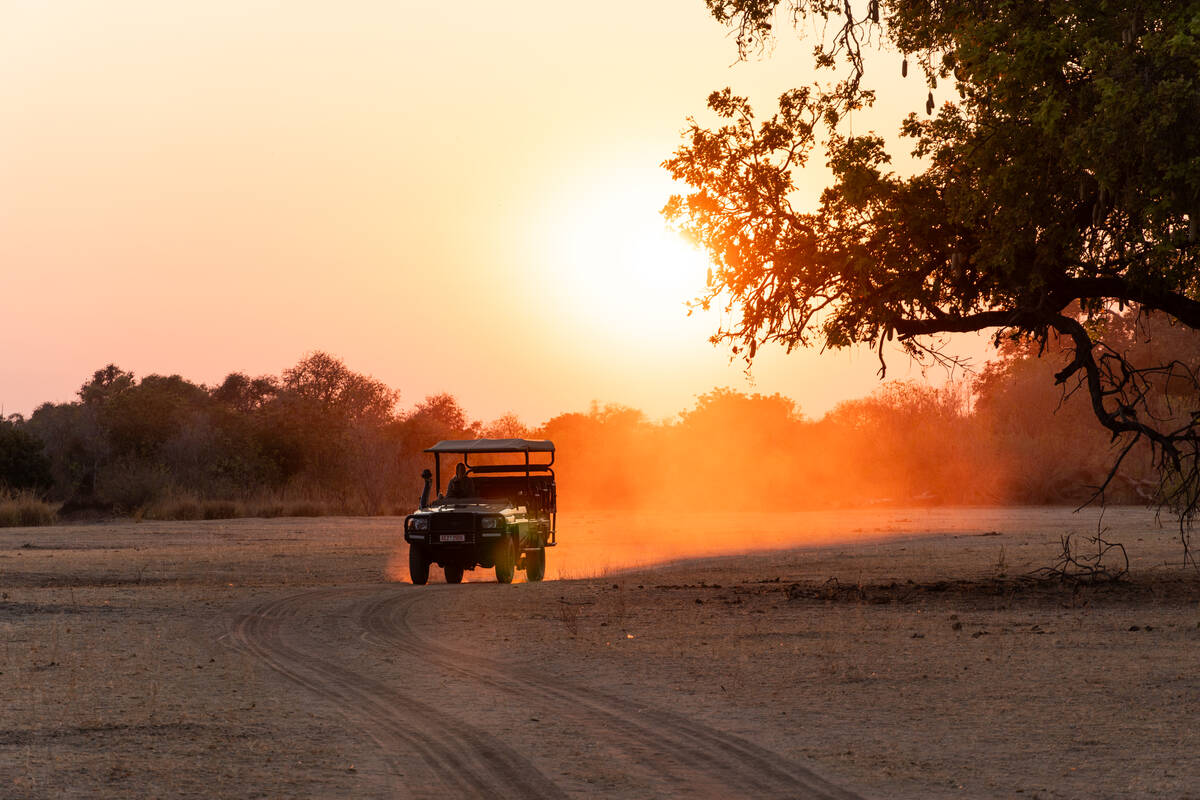
Safari is usually measured by sight—”what did you see?” is ever the question to be answered. Seeing is not the problem, but hearing can be. On game drives through Mana Pools, we wanted to use not just our eyes, but our ears and nose. It required getting out of the car and onto the ground. When word came over Nyamatusi’s camp radio about a sighting of painted dogs (formerly known as African wild dogs), Yona figured it was the perfect opportunity to take a stroll through the bush.
The walking safari—just as it sounds, an amble through the bush with an armed guide—was pioneered just across the river, in Zambia’s South Luangwa National Park. Walking, our feet crunching over the deadfall, was the only way to understand how truly silent an elephant walks.

It was the only way to fully breathe in the heady dill-smell of the shrubbery. To hear the surging exhale of a flock of small black birds passing overhead. The knock of wood against metal was Yona, a Winchester rifle loaded with five .375 cartridges, cradled in his arms. The muffled whispers were us, pointing to the baboons, elephants and warthog we spotted.
The painted dogs were there as promised, a pack fourteen strong lounging in the last shade of the evening, waiting for dark to begin their hunt. Their Jackson Pollack coloring blended perfectly with the burnt orange and browns of the savanna underbrush. A few pups nipped at each other as they fought over a stick. A large female stood solid on all fours, her dish ears pointing straight ahead.
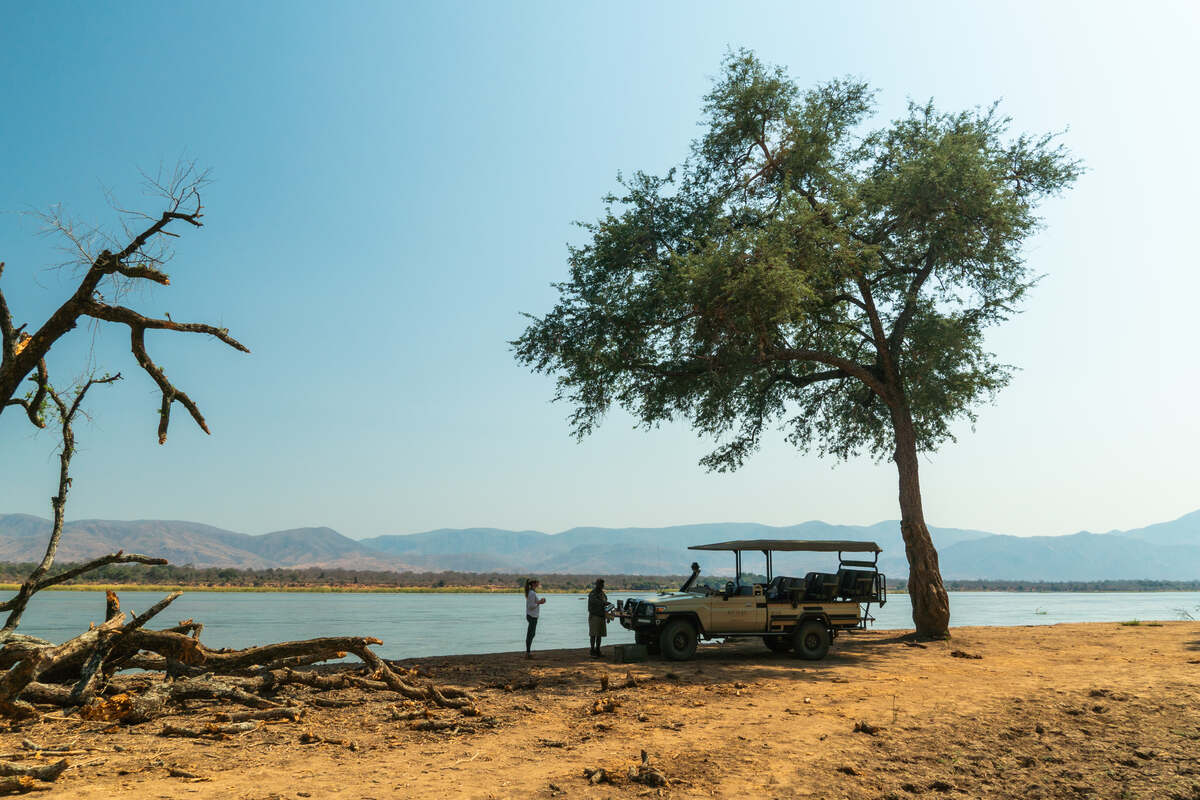
“She wants to hunt,” Yona said, and I could feel the race-hound impatience simmering in her muscles.
As we crouched there, still and watching, I was drawn to a honeyed movement in the bushes beyond. I gestured to Yona, who crouched down, lifted his binoculars, and glassed the brush. “Hyena,” he said. We crept closer, moving slowly and bent at the waist, and came to rest behind a fallen tree, some twenty yards from these new arrivals. There were three, bull-necked and bare-snouted, their chests deep with muscle. The silent approach had worked. “This is special,” Yona said. “It’s rare to see them in the day.”
“The universe is full of magical things patiently waiting for our wits to grow sharper,” wrote the playwright Eden Phillpotts. On safari, let Africa be your whetstone.
A combined Rovos and African Bush Camps journey with Discover Africa starts at USD $7,200 -$9,730 per person, sharing in a double room.

